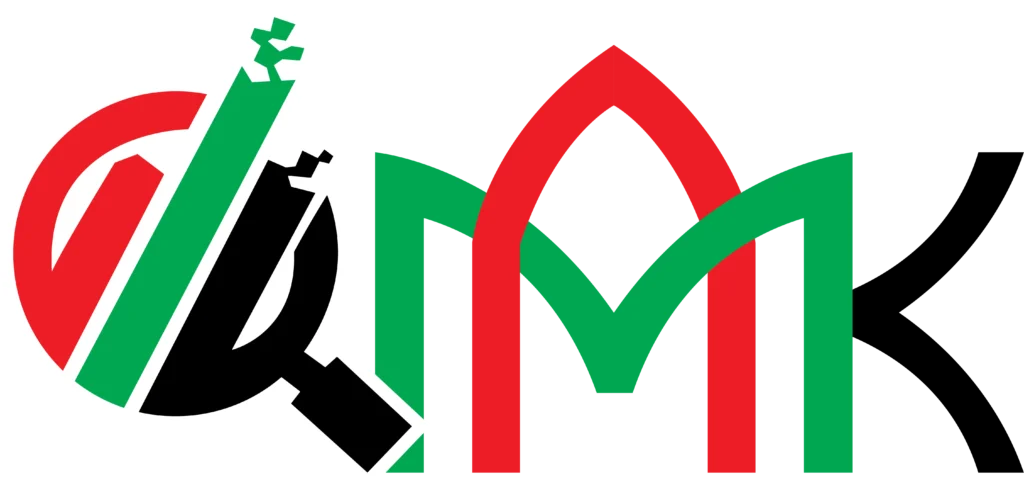Resident and Employee Visa Services in UAE: A Clear Guide
Why visas matter for life and work in the UAE
People move to the UAE for family life, for careers, and for investment. The country welcomes skilled workers and active investors. The system sets rules with care and with speed. A person needs the right visa to live in the country. A person needs the right permit to work for an employer. A clean file keeps access to banks, clinics, and schools. A correct status protects rights at borders and in offices.
A residence visa suits long stays. A work visa suits jobs with a registered employer. Each path uses its own steps and its own documents. Each path ties to a sponsor who accepts duties. When you pick the right path, you move without friction. When you keep records in order, you renew without stress.
What a residence visa means in daily life
A residence visa lets a person live in the UAE for years. A sponsor holds the duty to support the application. A sponsor can be an employer, a family member, or a company owned by the applicant. A property owner can also sponsor under defined conditions. The visa unlocks the Emirates ID and the digital portals. The ID lets you sign, pay, and access public and private services.
What you do with a residence visa
- You open a bank account and receive a card.
- You sign a lease and connect utilities with ease.
- You enroll children in schools with smooth checks.
- You buy insurance and visit clinics without hurdles.
- You travel in and out with a valid status at the border.
What an employment visa means for professionals
An employment visa lets a foreign worker accept a job. A registered company sponsors the worker. The sponsor applies through approved portals. The worker enters with an entry permit. The worker completes a medical and biometrics. The worker receives a residence sticker or a digital permit that proves the right to work and to stay.
Daily benefits for employees
- You work legally under labor law protections.
- You hold a clear contract with pay terms and duties.
- You access payroll, insurance, and end-of-service benefits.
- You sponsor your family after your status becomes active.
- You renew your status as your contract continues.
Key differences at a glance
A residence visa focuses on living rights and services. An employment visa focuses on work rights and duties. A person may hold a residence visa from family and can work only if rules allow a separate permit. A person on an employment visa holds residence through the employer. Understanding this link helps you plan moves, renewals, and exits.
Simple contrast
- Residence path: life, family, and services first; work only if authorized.
- Employment path: job first; residence attached to the job’s sponsor.
- Common ground: medical checks, Emirates ID, and compliance timelines.
Who can sponsor whom under residence
Sponsors must meet conditions before they support others. A worker with a valid status can sponsor spouse and children. Income thresholds apply with documented proof. A company can sponsor its staff based on activity and quota. A property owner can sponsor self under value rules. An investor can sponsor self under company ownership rules.
Common residence sponsorship routes
- Employer → employee.
- Resident → spouse and children.
- Property owner → self (with value thresholds).
- Investor or partner → self (with company documents).
Employee visa: step-by-step process
Step 1: Job offer and contract
The employer issues an offer. The employee accepts terms. Both parties sign a contract with role, pay, and location.
Step 2: Entry permit request
The employer applies for an entry permit through the immigration portal. The system issues an e-visa after checks. The worker uses it to enter within the validity window.
Step 3: Medical check and biometrics
The worker completes a medical at an approved center. The worker completes biometrics for the Emirates ID.
Step 4: Emirates ID and insurance
The worker files for the Emirates ID. The employer links health insurance where required. The ID moves to print after approvals.
Step 5: Visa stamping / issuance
The authority issues a residence sticker or a digital permit. The labor contract receives final approval. The worker can now start duties at the site set in the contract.
Step 6: Family sponsorship (optional)
After activation, the worker files for spouse and children sponsorship. The worker submits notarized marriage and birth certificates with translation and attestation where needed.
Documents for an employee visa
A strong file speeds approvals and prevents rework.
From the employer
- Trade license and establishment card copies.
- Quota and immigration file details.
- Signed employment contract with role and pay.
From the employee
- Passport copy with sufficient validity.
- Recent passport-size photos.
- Entry permit copy after issuance.
- Medical fitness results from an approved center.
- Emirates ID application receipt.
- Attested education or professional certificates when required.
Validity and renewals for employee visas
Most work-linked residences run for 2–3 years, depending on category and emirate practices. Renewals follow a similar path: contract check, medical, ID renewal, and fee payment. The sponsor files before expiry to avoid fines. A worker keeps a soft copy of the renewed status for travel. If employment ends, grace rules allow status changes or exit within defined periods.
Residence visa: step-by-step process
Step 1: Confirm sponsorship basis
Pick employer, family, property, or investor route. Gather evidence that supports the chosen basis.
Step 2: Entry permit or status change
If you’re outside the country, use an entry permit. If you’re inside on a valid status, request a status change.
Step 3: Medical and biometrics
Complete the medical fitness test. Complete biometrics for the Emirates ID.
Step 4: Evidence and approvals
Submit proof of relationship for family cases, such as marriage or birth certificates. Submit title deeds for property cases. Submit company records for investor cases.
Step 5: Final issuance
Receive the residence permit in digital form or as a sticker, as applicable. Collect the Emirates ID card after printing.
Documents for a residence visa
Checklists change with your route. The following items often appear.
- Passport and photos for the applicant.
- Entry permit or status change receipt.
- Medical fitness certificate.
- Emirates ID application receipt.
- Sponsorship proof (employment contract, attested marriage certificate, attested birth certificate, property title deed, or company license and share certificates).
- Lease or Ejari and utility bill for address proof.
Validity and renewals for residence visas
Most residence visas run for 2–3 years, with renewals allowed before expiry. Golden or long-term types follow other timelines. Family members renew in line with sponsor’s status. Property and investor paths follow their own proof cycles. A calendar with reminders protects against gaps.
Practical timelines and real cost drivers
Approvals move fast when files are complete. Medical and biometrics add a few days. Public holidays and peak seasons can extend queues. Costs depend on category, emirate, insurance plan, and service speed. Attestations and certified translations can add time and fees, especially for overseas documents. A careful plan with a small buffer saves stress and money.
Ways to save time and avoid rework
- Match names and dates across all pages.
- Use certified Arabic translations where required.
- Start foreign attestation chains early.
- Keep scans in color with clear file names.
- Track expiry dates for IDs, leases, and insurance.
Rights and duties you should know
A resident must obey laws and keep documents current. A worker must respect the contract and site rules. A sponsor must maintain records and pay fees on time. A family sponsor must keep income proof and suitable housing. Good compliance protects access to services and avoids fines.
Simple compliance habits
- Store approvals, receipts, and contracts in one folder.
- Renew insurance and ID well before expiry.
- Update address and phone in official portals.
- Inform authorities when jobs or sponsors change.
- Keep exit and re-entry tickets with status copies when you travel.
Common mistakes and easy fixes
- Name mismatches: Use one spelling from the passport on all forms.
- Missing attestations: Check home-country stamps and UAE legalization.
- Late medicals: Book medical and biometrics as soon as you enter.
- Wrong photos: Follow size and background rules to prevent returns.
- Expired establishment card: Employers should renew cards before hiring.
- Unclear job role: Align the contract title with qualifications and activity.
A second review before submission removes most of these risks.
When employment ends or sponsors change
When a job ends, a cancellation process starts. A grace window allows you to find a new job or exit. Don’t overstay the grace window. Keep copies of cancellations and new filings. Family members tied to your visa must update status in time. If you move from employer sponsorship to investor sponsorship, plan the sequence to avoid gaps.
Family life, property, and planning
Families use residence visas to build stable lives. Spouses manage school admissions with ID cards. Parents open accounts for utilities and telecom lines. Property owners manage tenancy and maintenance with less friction. Long-term planners consider wills, POAs, and local rules for inheritance. These documents support families during travel or unexpected events.
Digital steps that make things faster
Portals support online payments and submissions. UAE Pass reduces in-person signatures. ID centers use appointments to reduce queues. Digital cards and QR codes replace some physical stickers. Keep your login secure and update your phone number. Use two-factor authentication where portals allow it.
Related Posts:
Why professional help reduces risk
Rules change and forms update. A professional prepares checklists and timelines. A professional reviews names, dates, and translations. A professional books appointments and shares receipts. A professional follows up with the right desk when a file stalls. You focus on life and work while the paperwork moves on time.
What can help your case — Mubarak Al Ketbi (MAK) Auditing
Your move deserves clear steps and clean records. Mubarak Al Ketbi (MAK) Auditing plans your route, prepares your file, and guides every stage. Our team gathers documents, manages attestations, and books medicals. Our team syncs Emirates ID steps and tracks approvals. Our team handles renewals and family sponsorship with care. We push early and solve issues fast because a stitch in time saves nine.
Contact and visit details
- Visit our office: Saraya Avenue Building – Office M-06, Block/A, Al Garhoud – Dubai – United Arab Emirates
- Contact / WhatsApp: +971 50 276 2132













